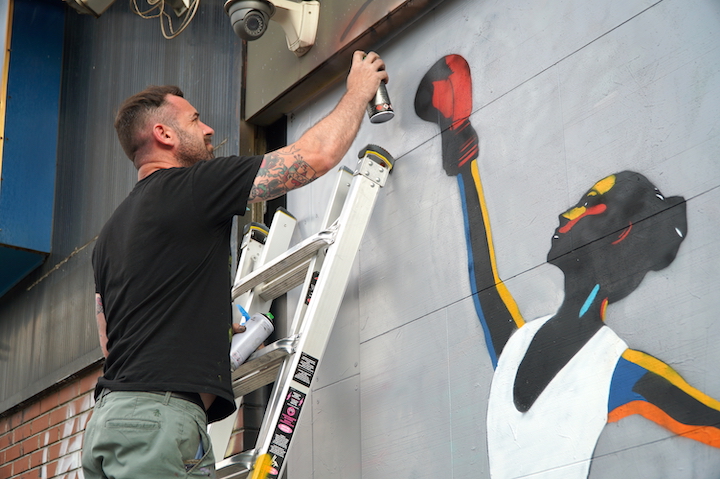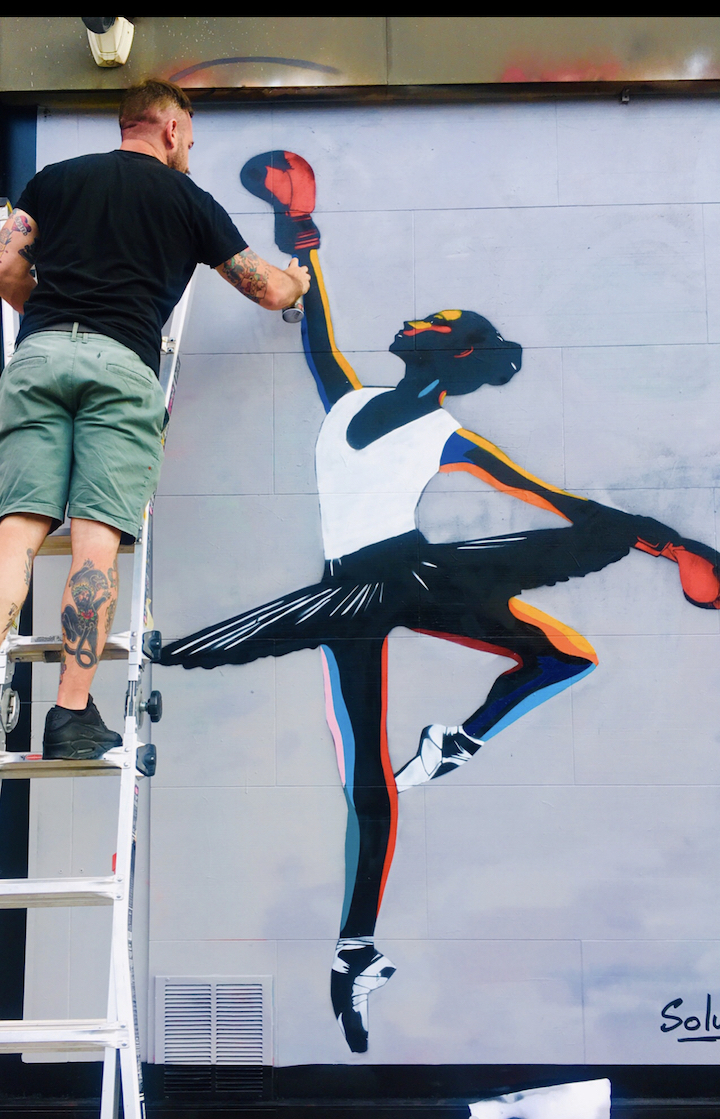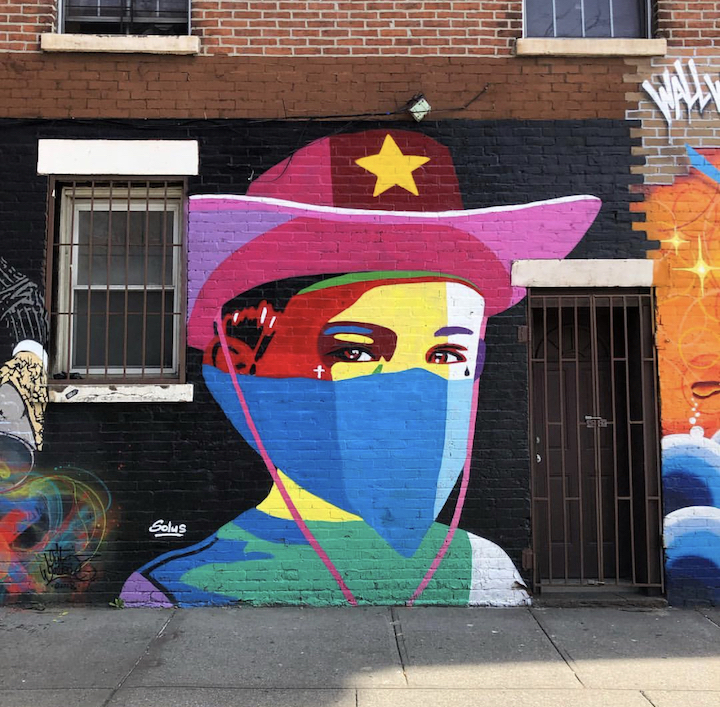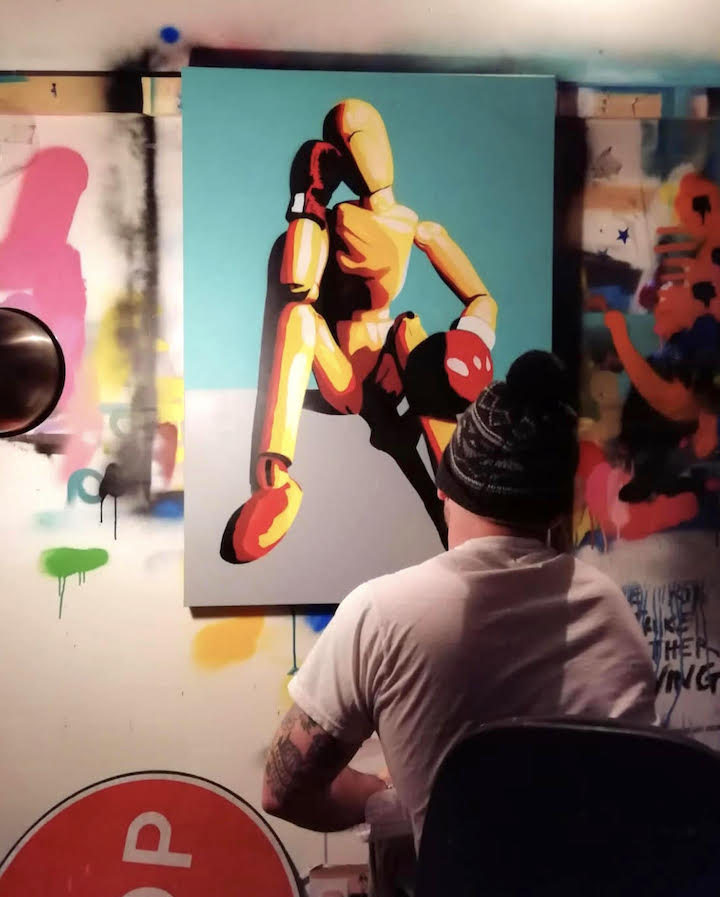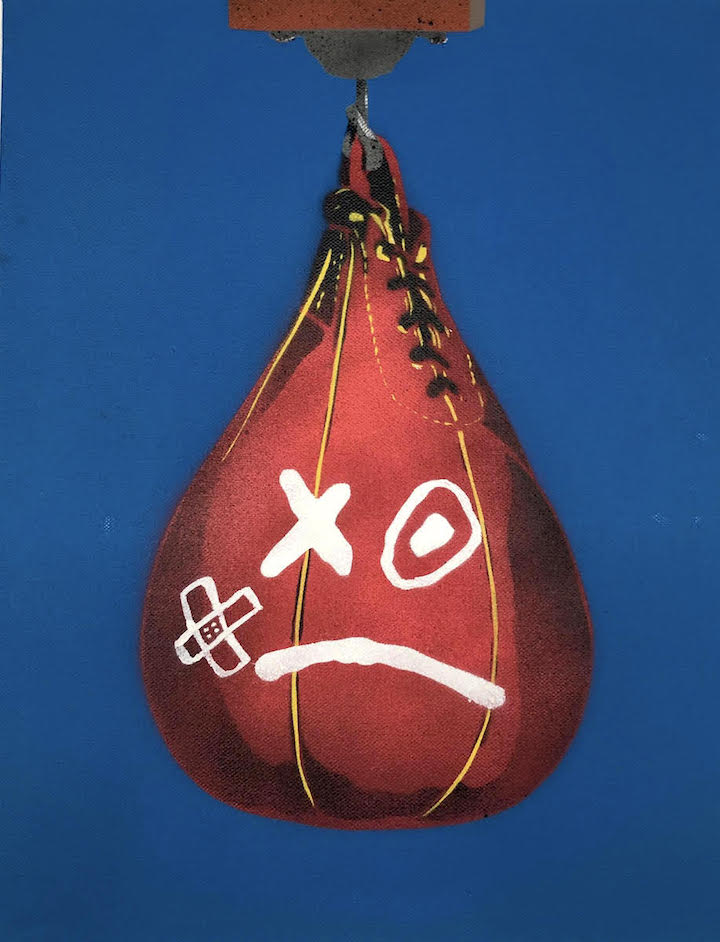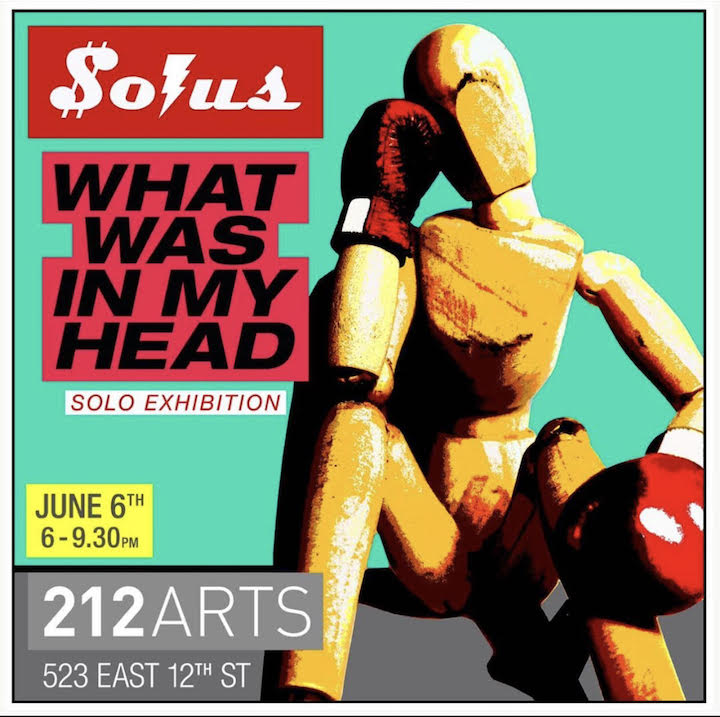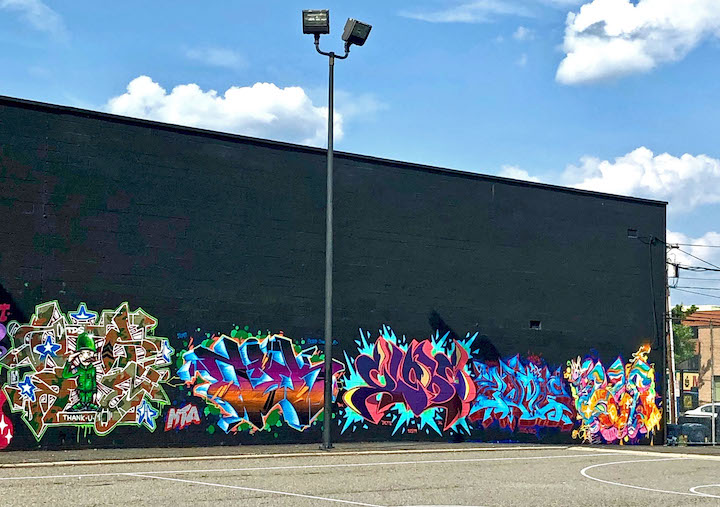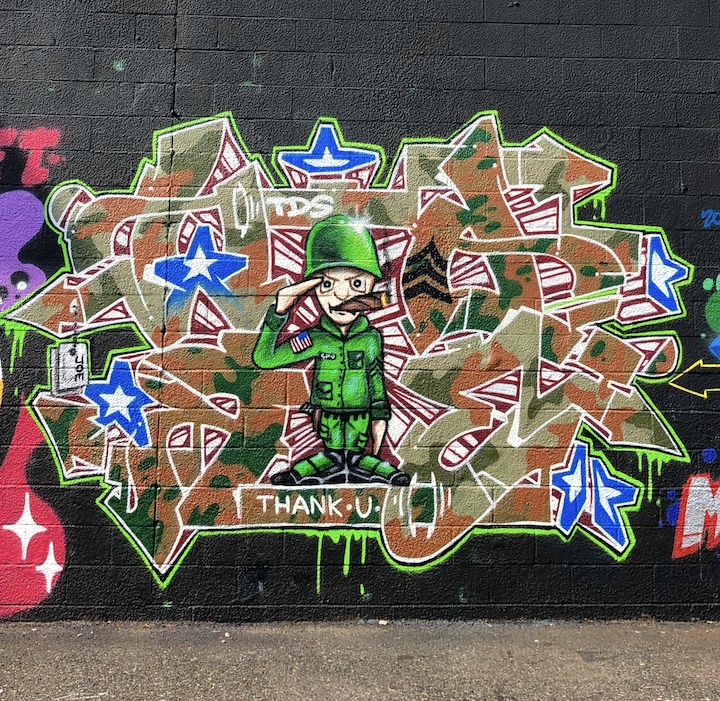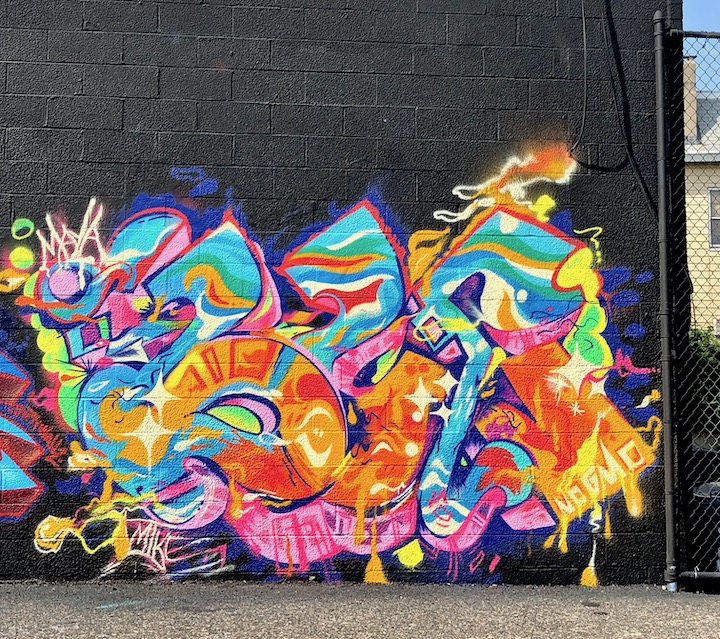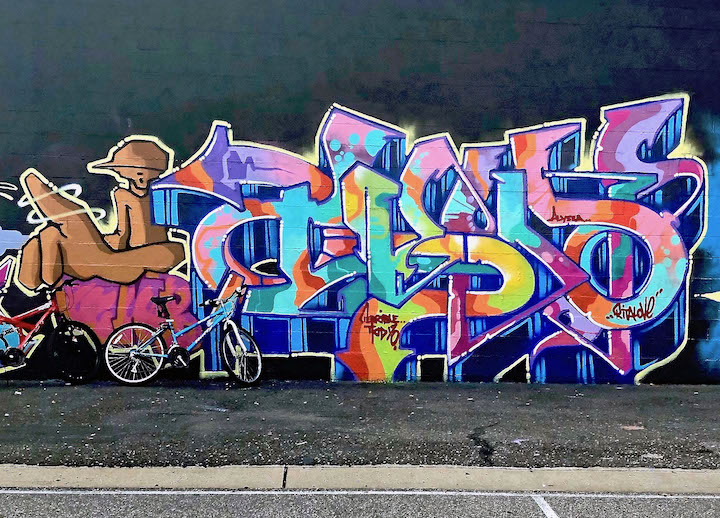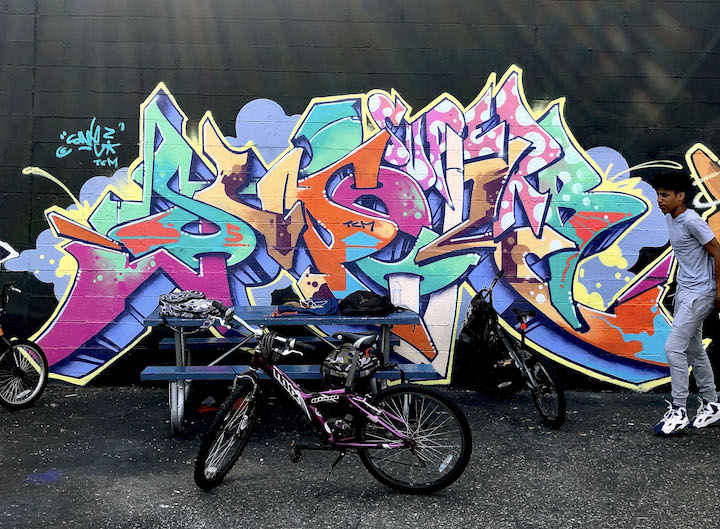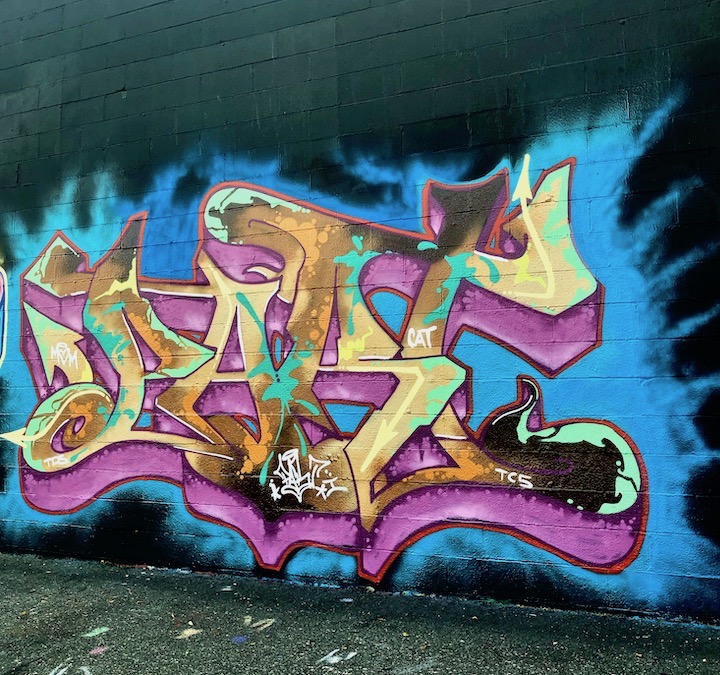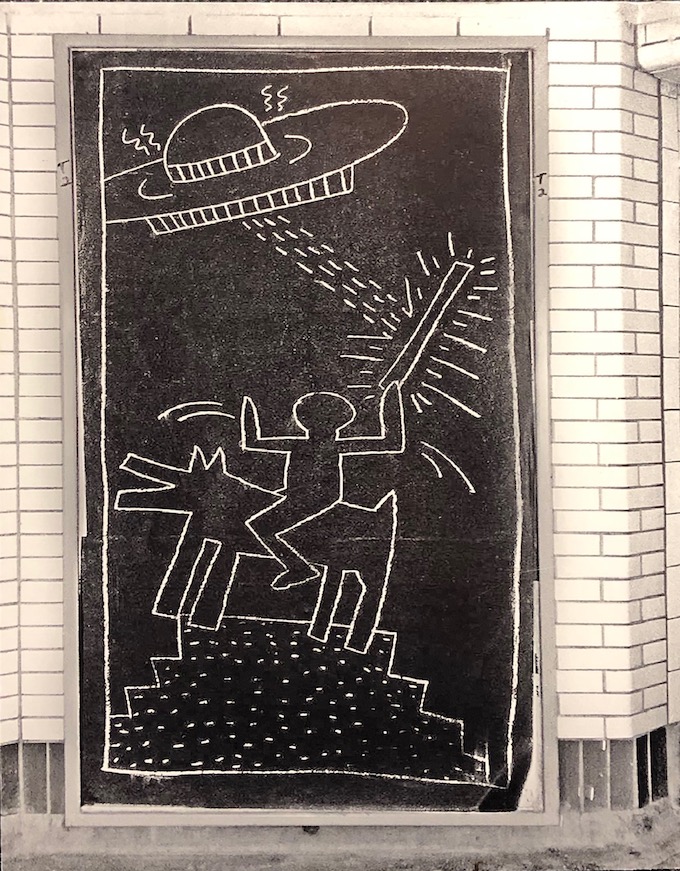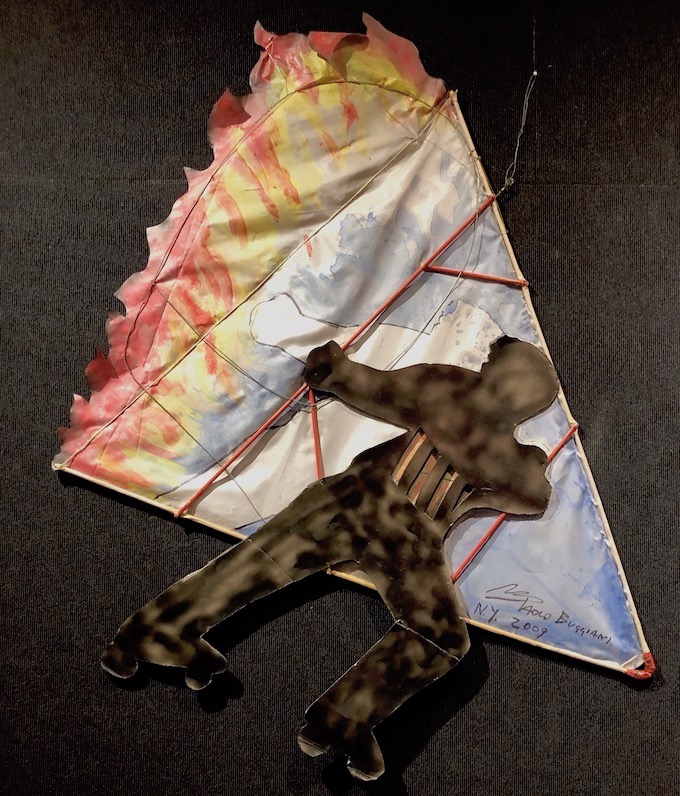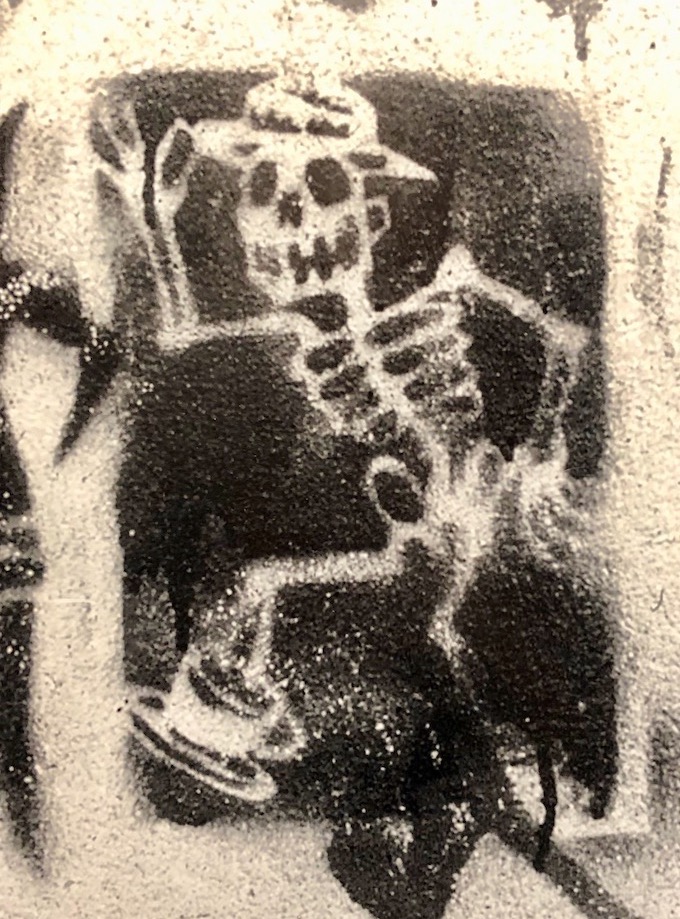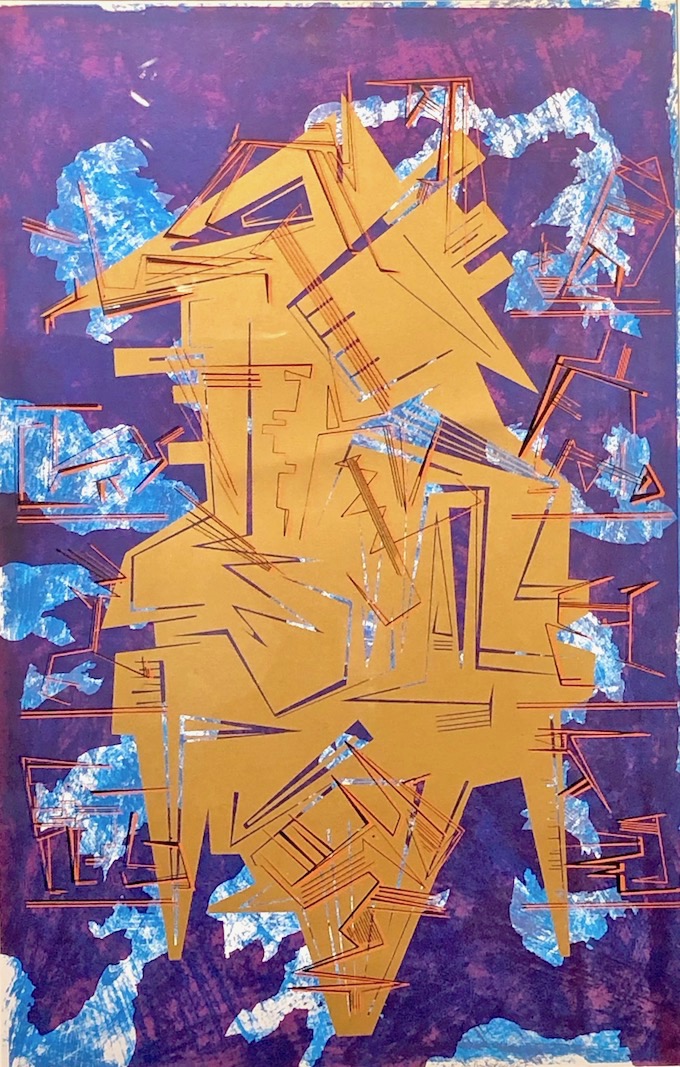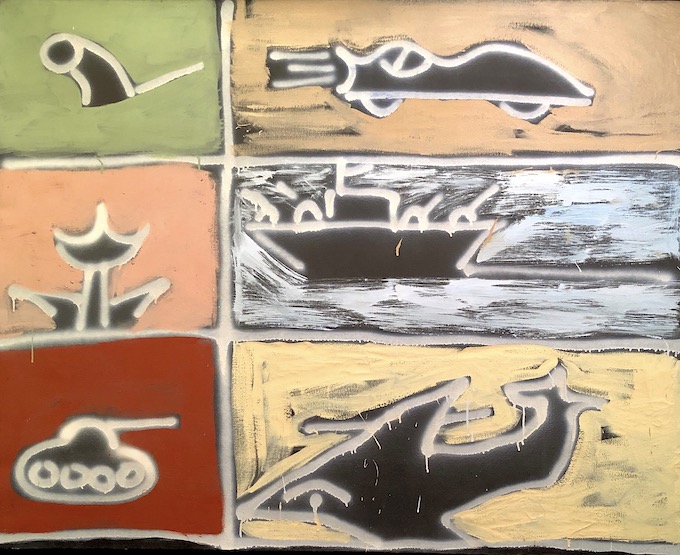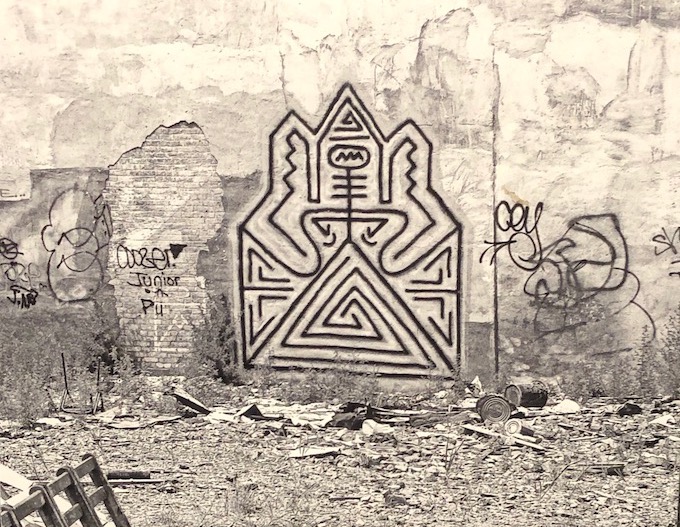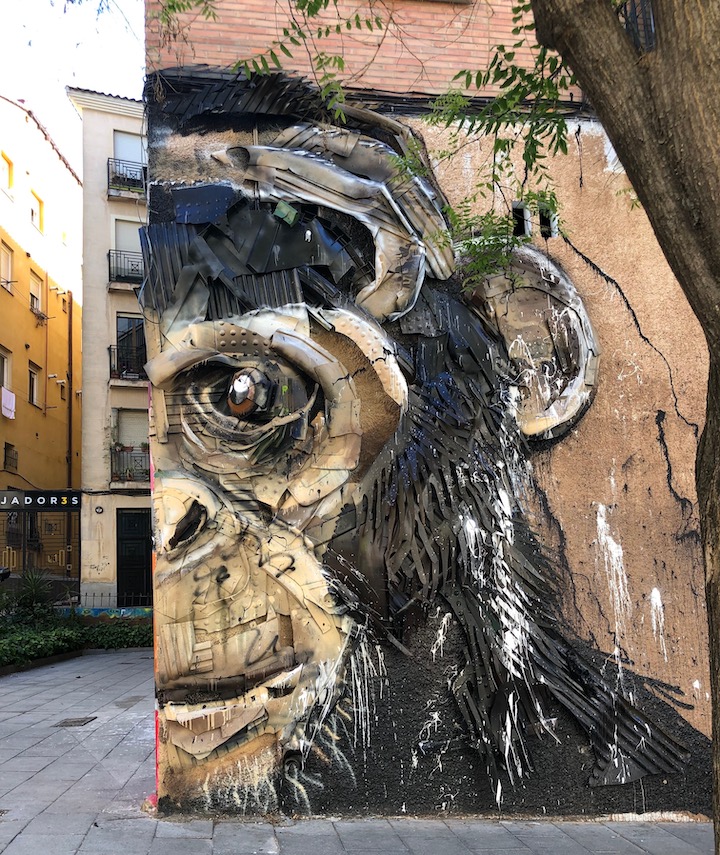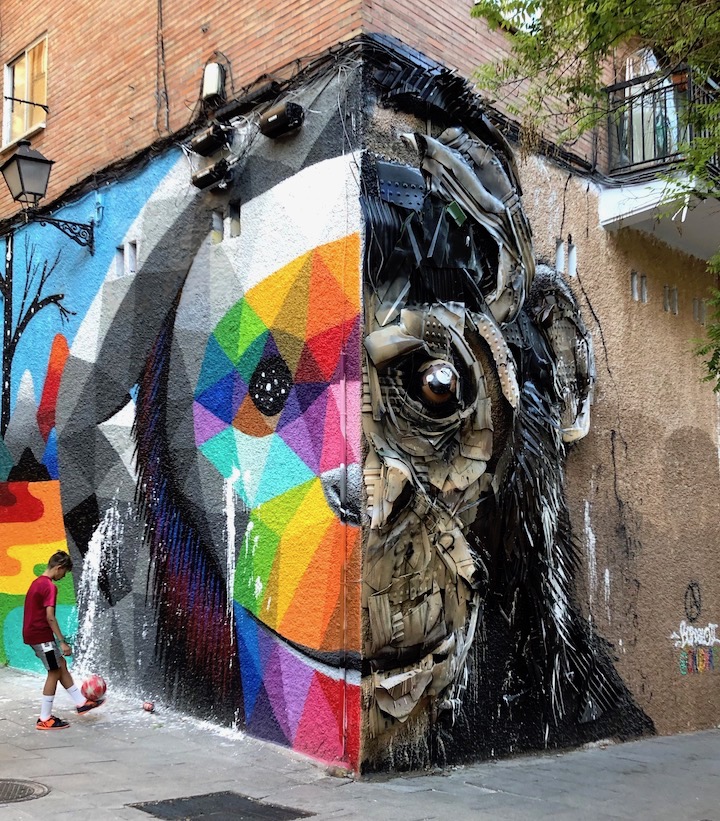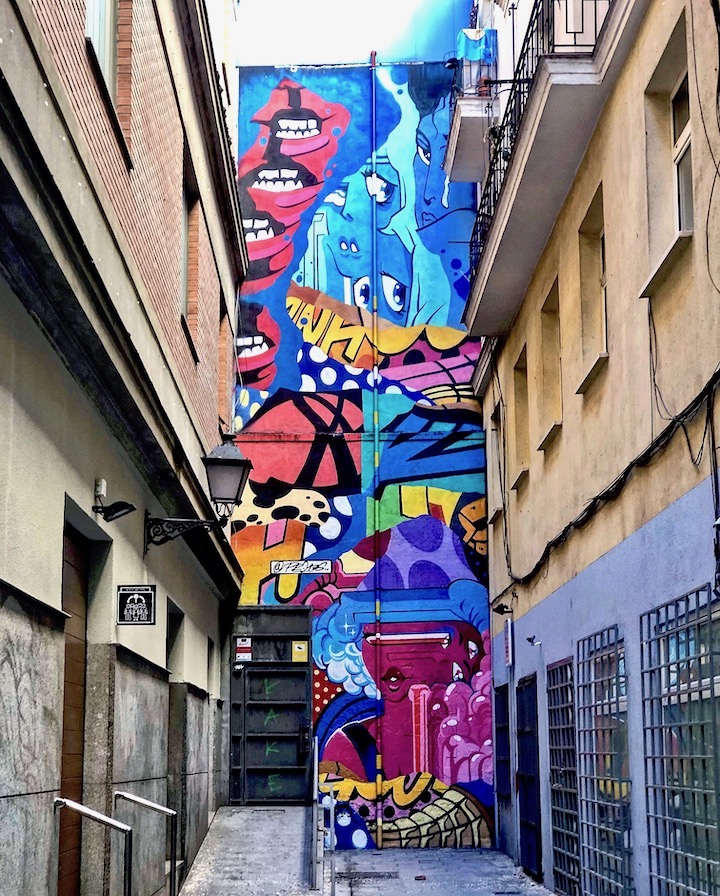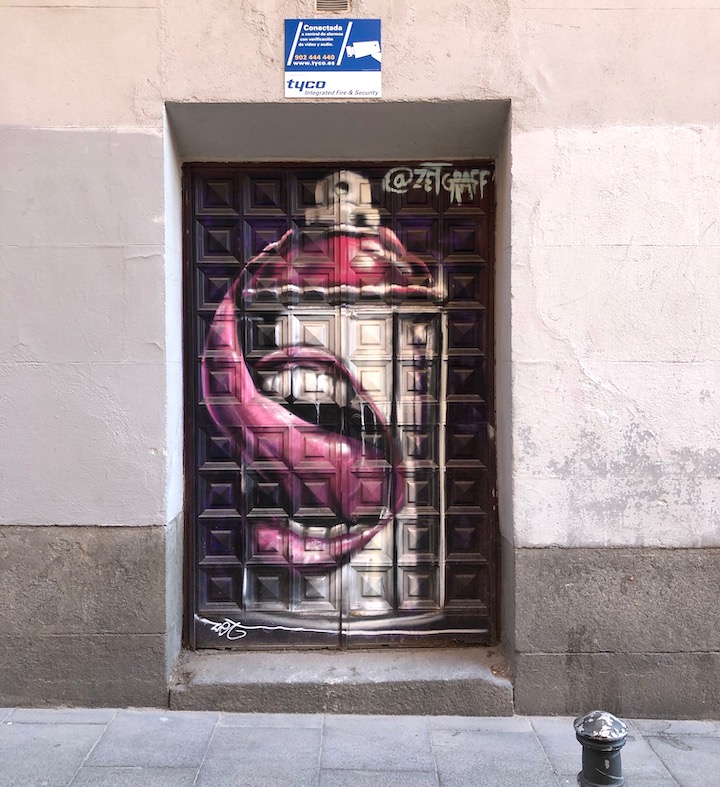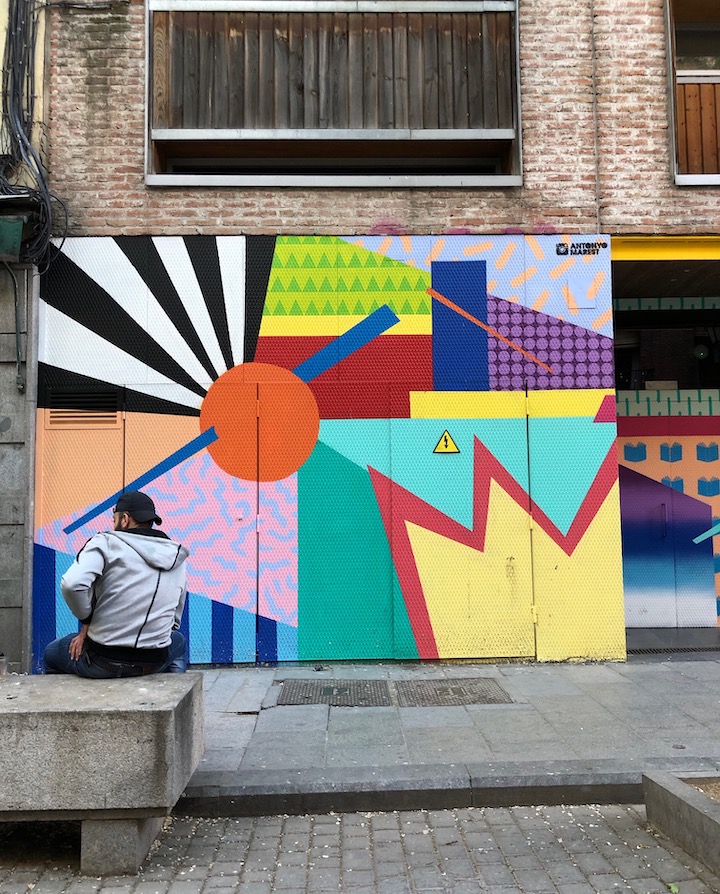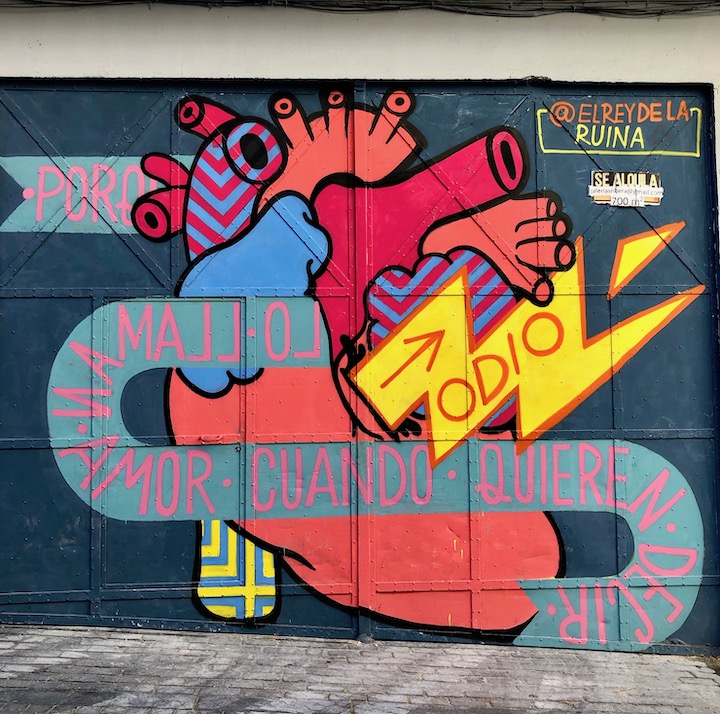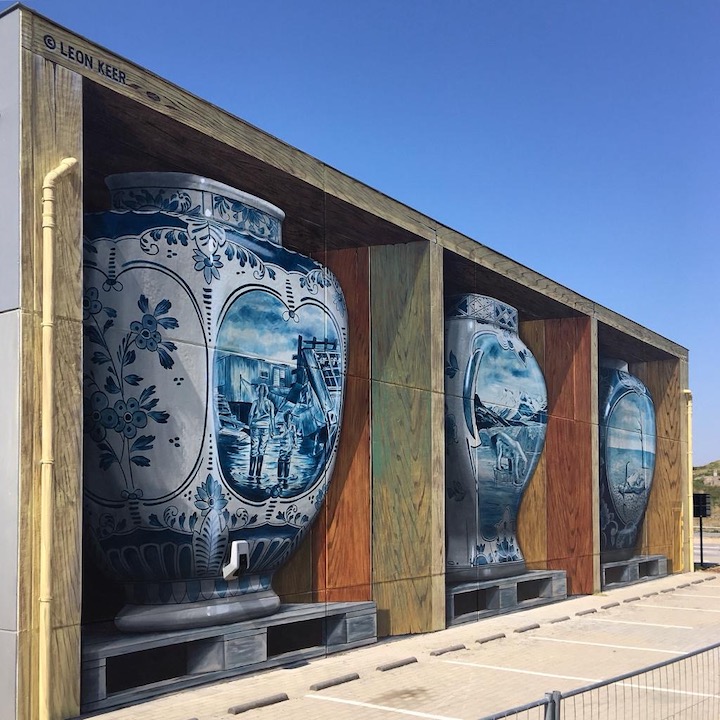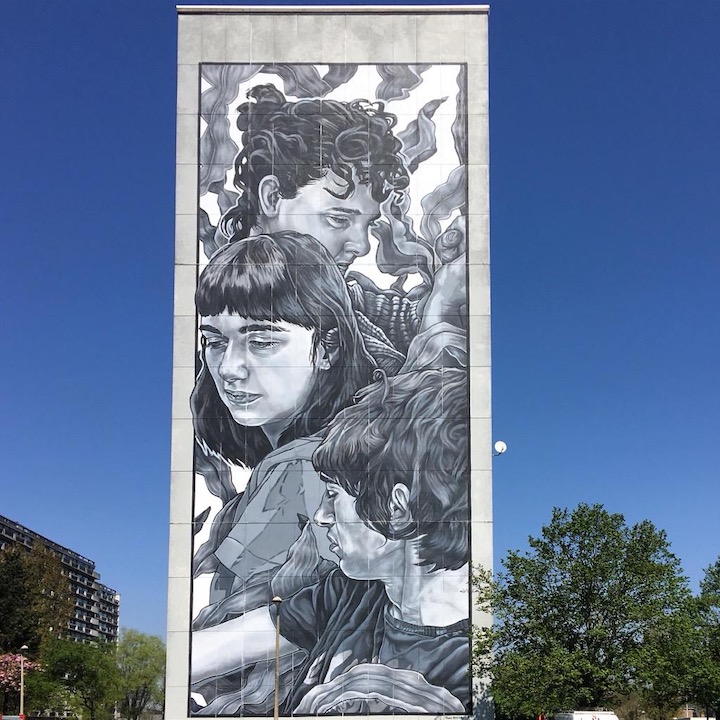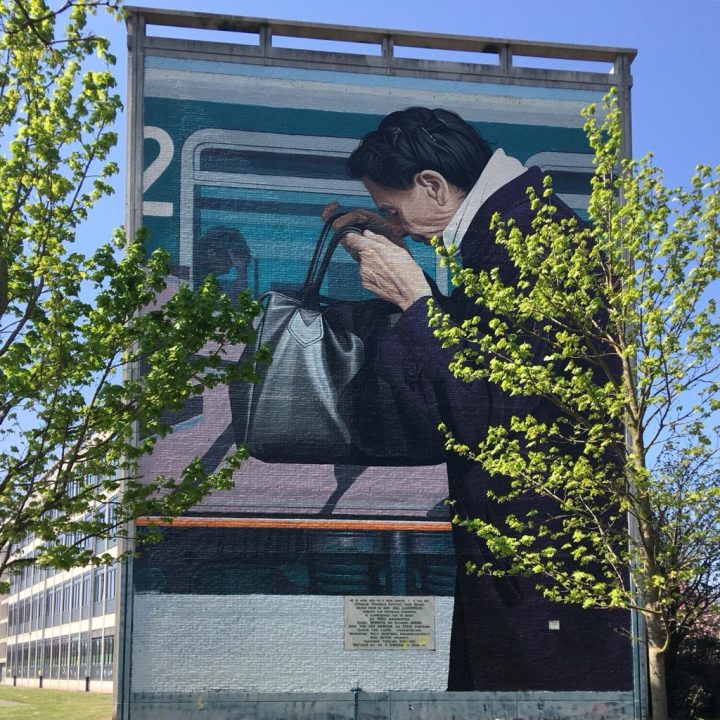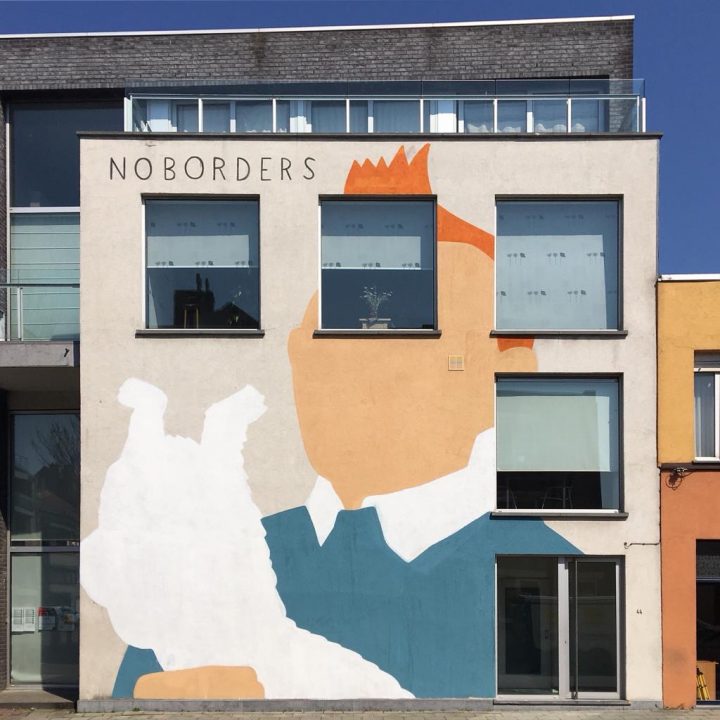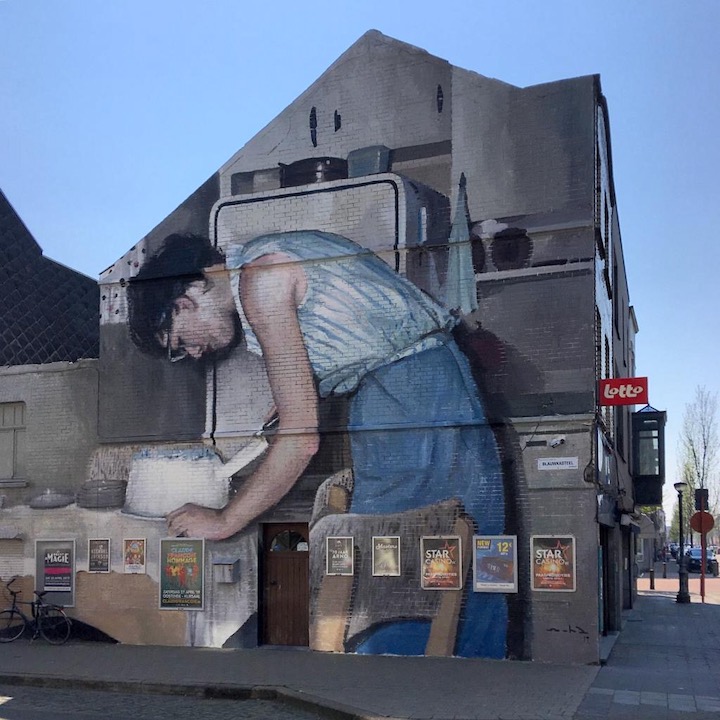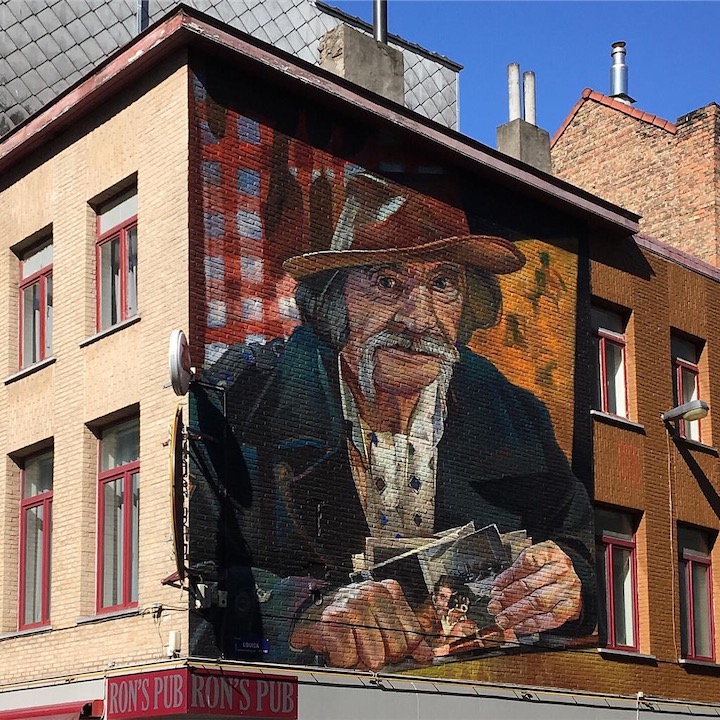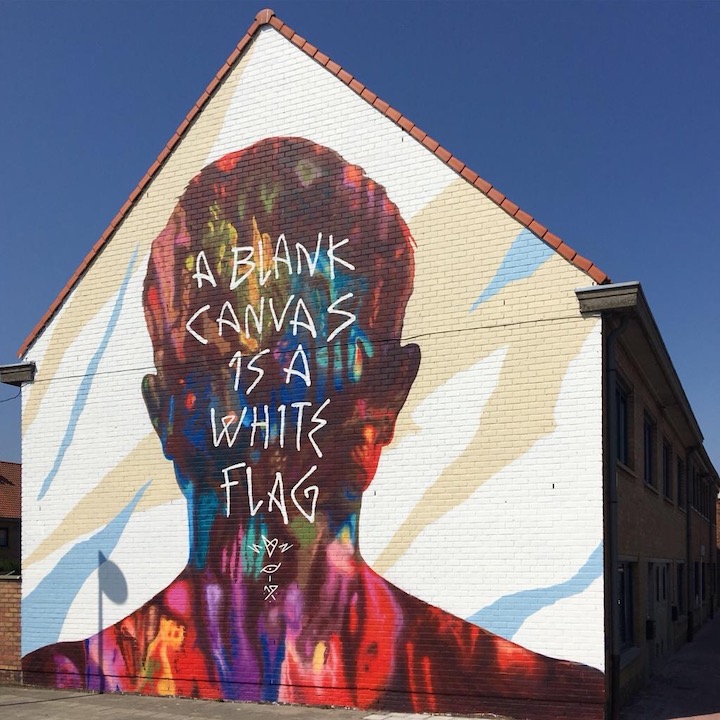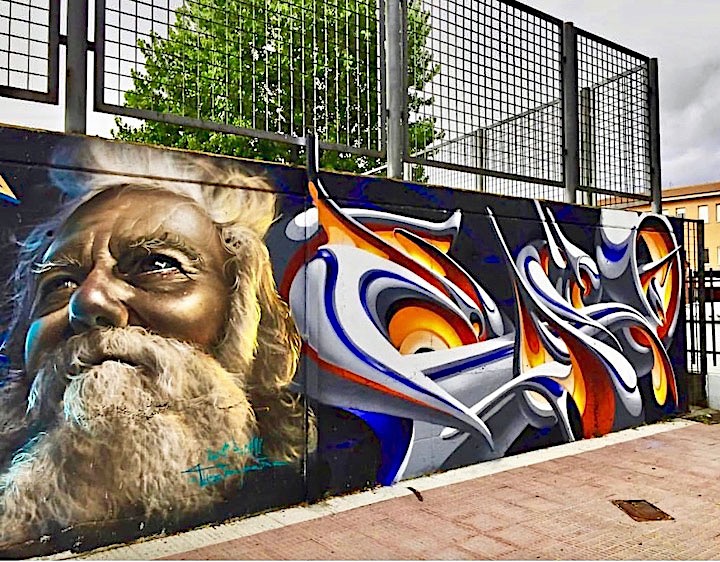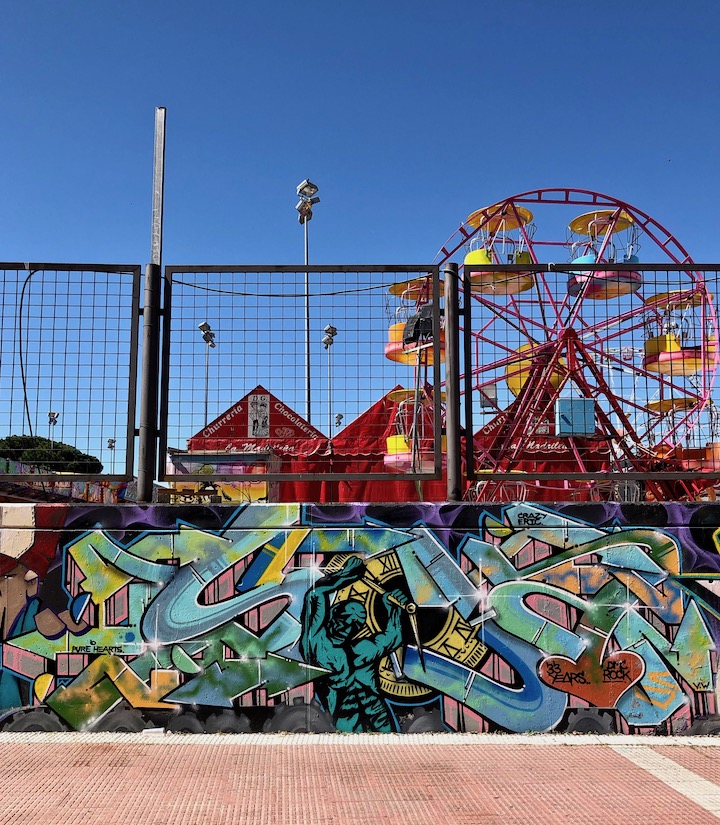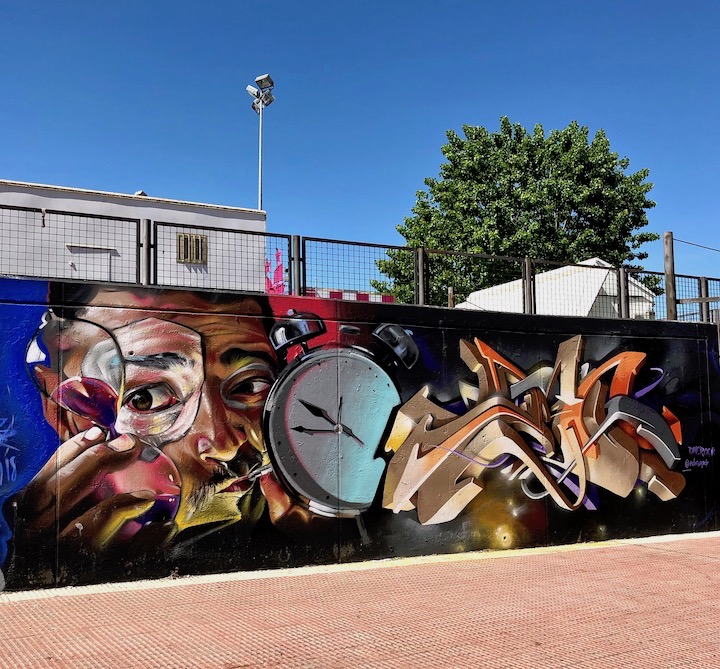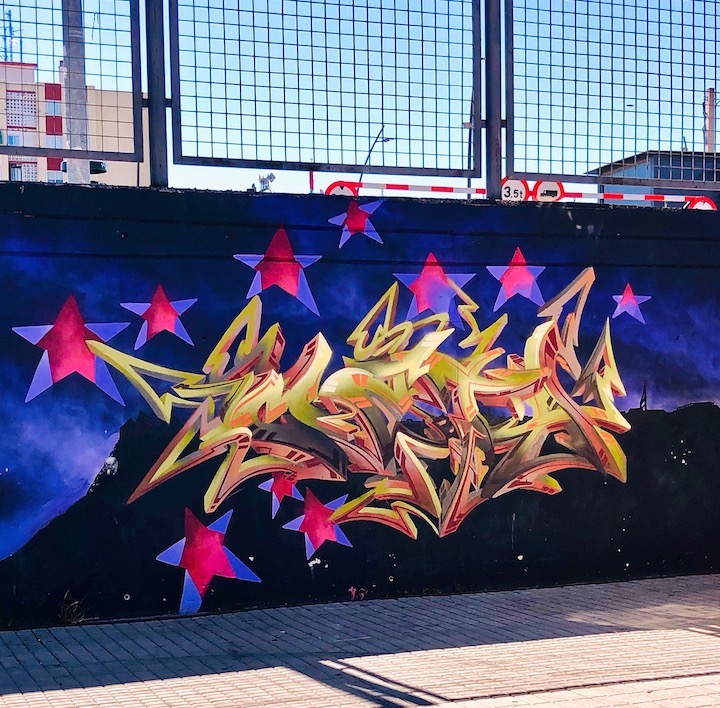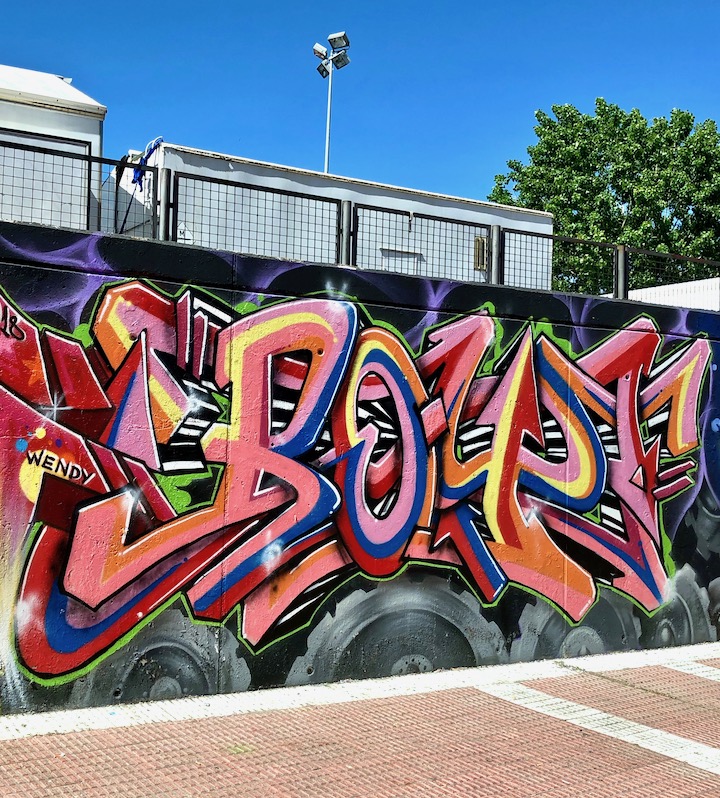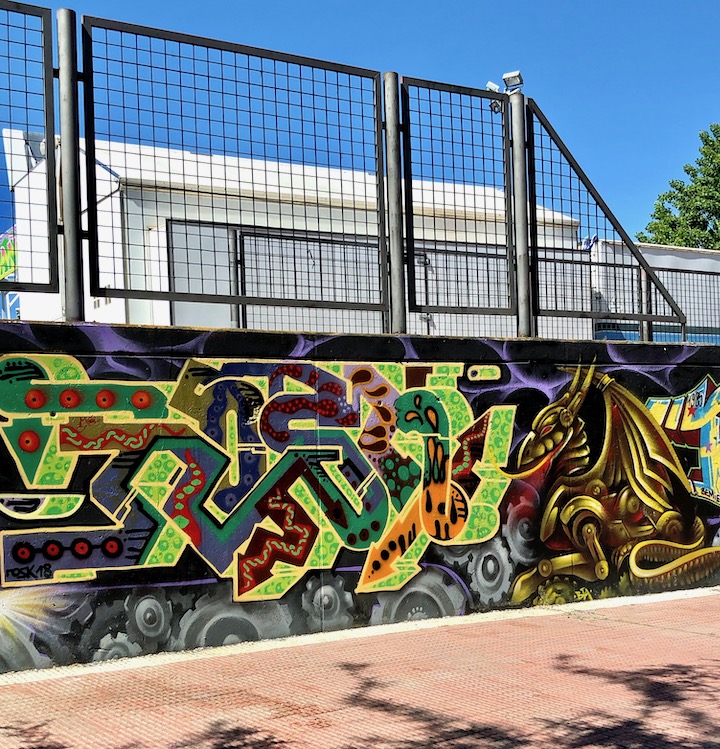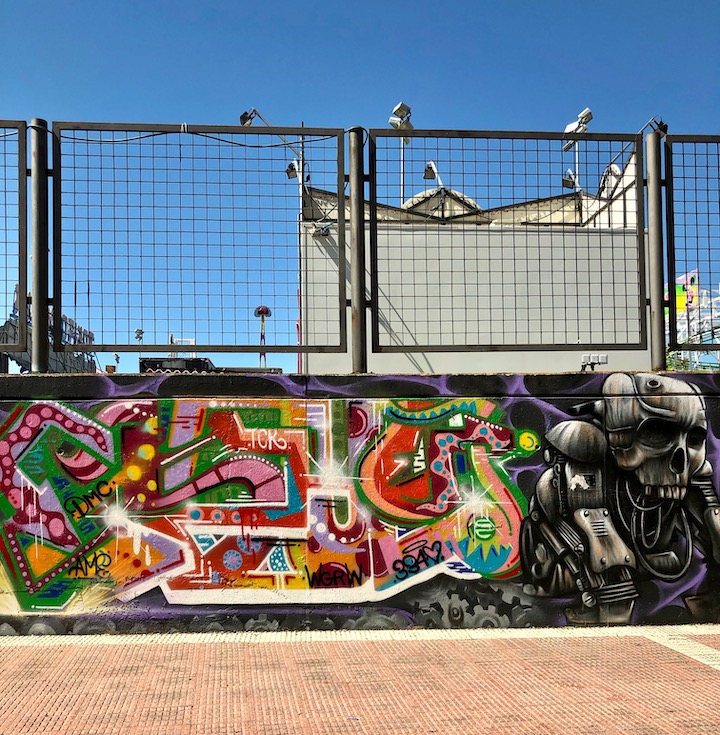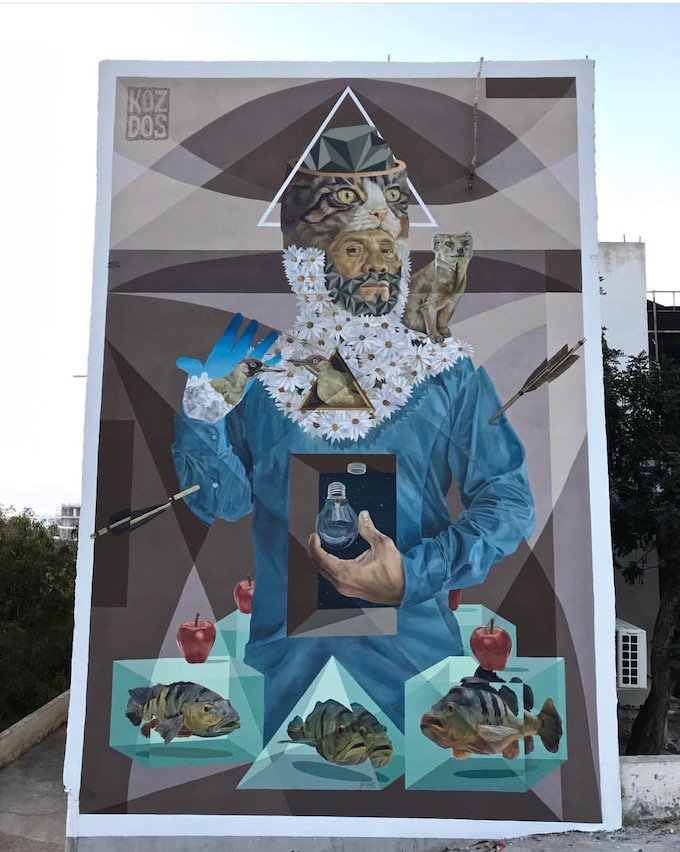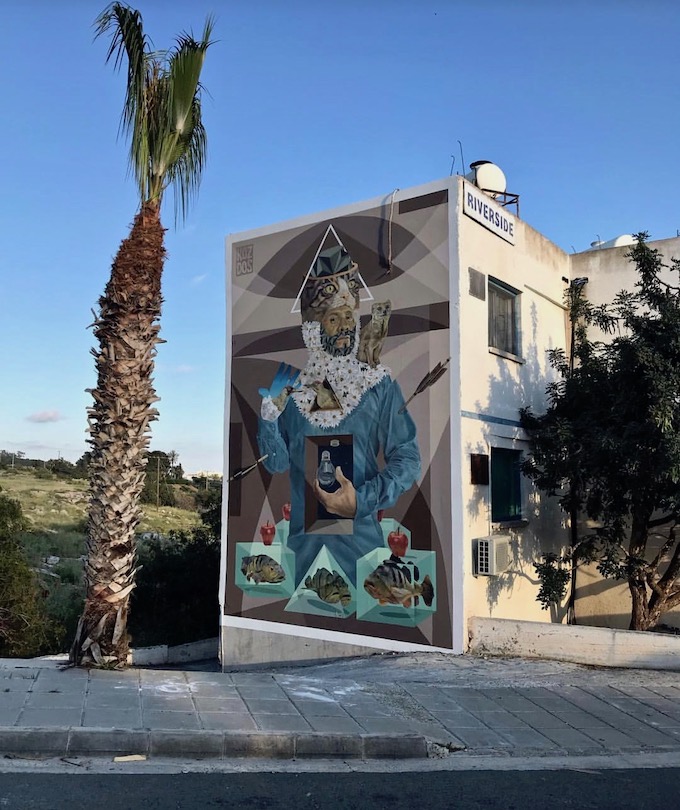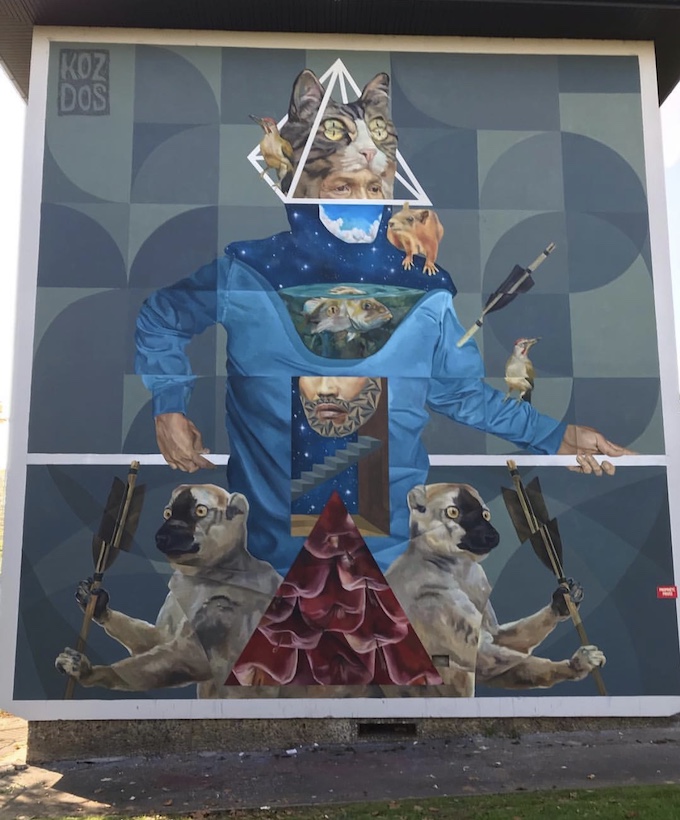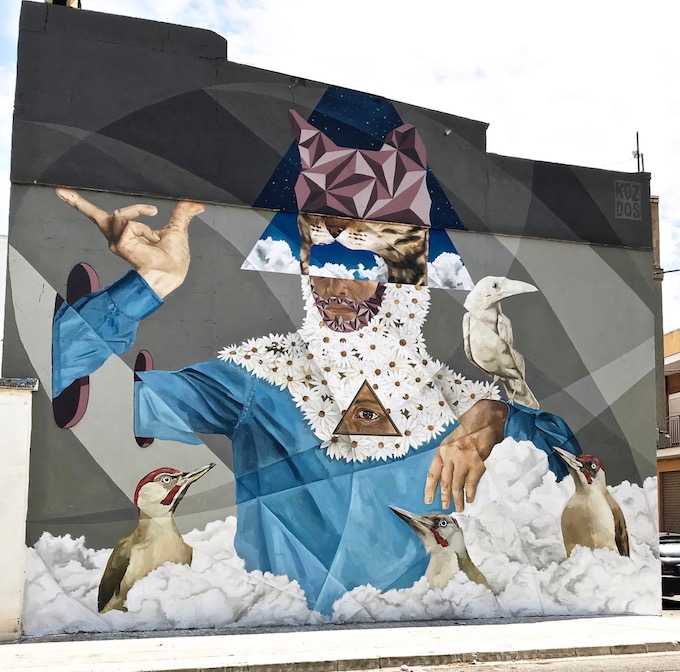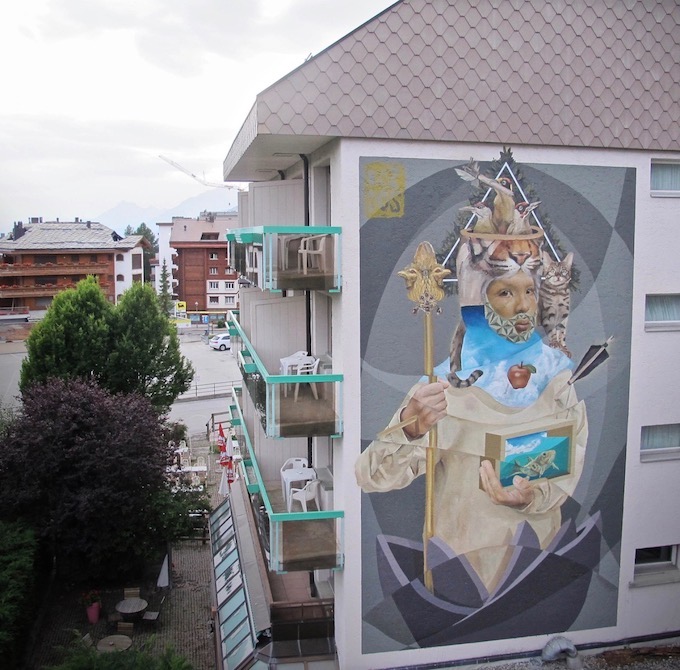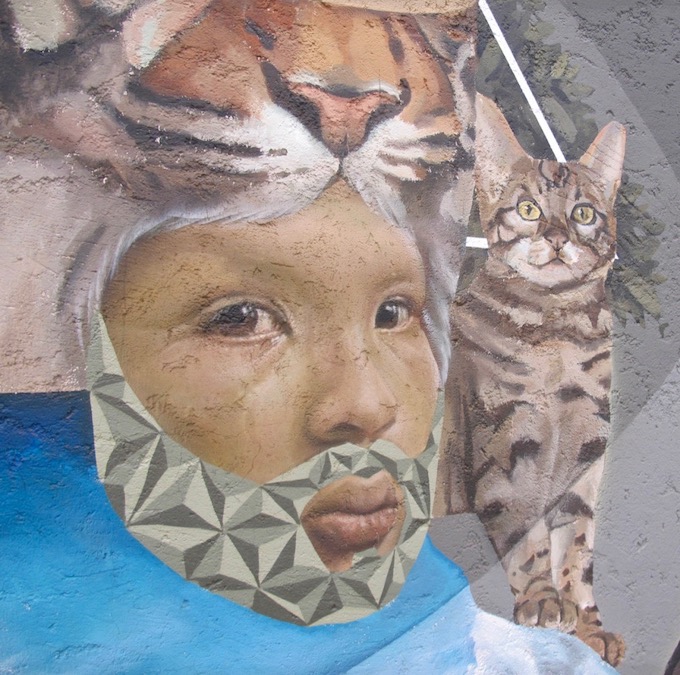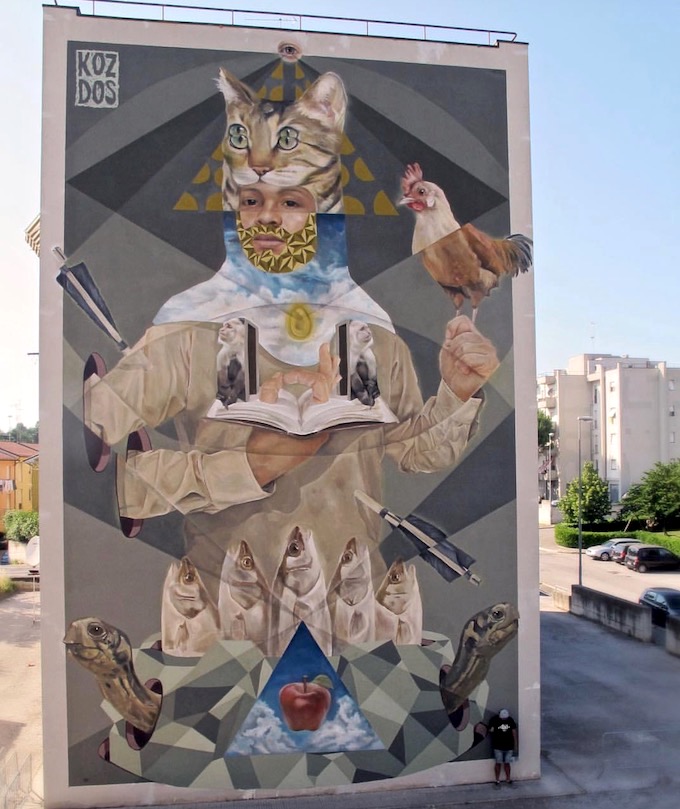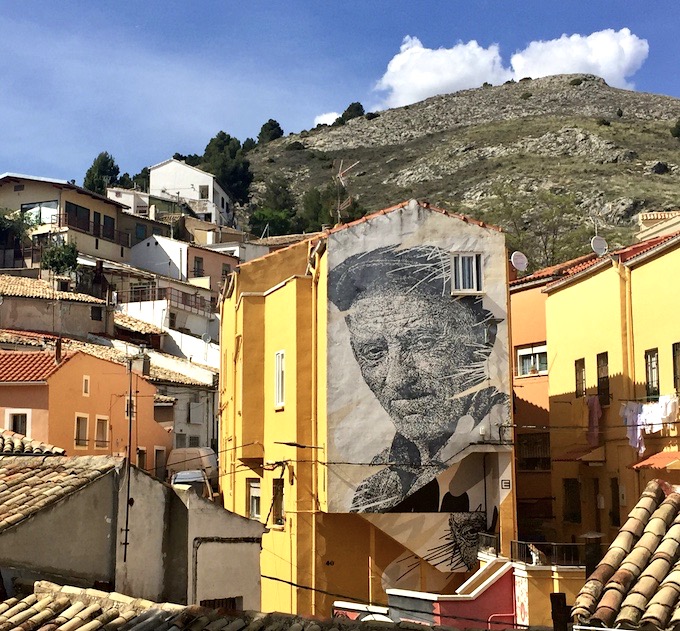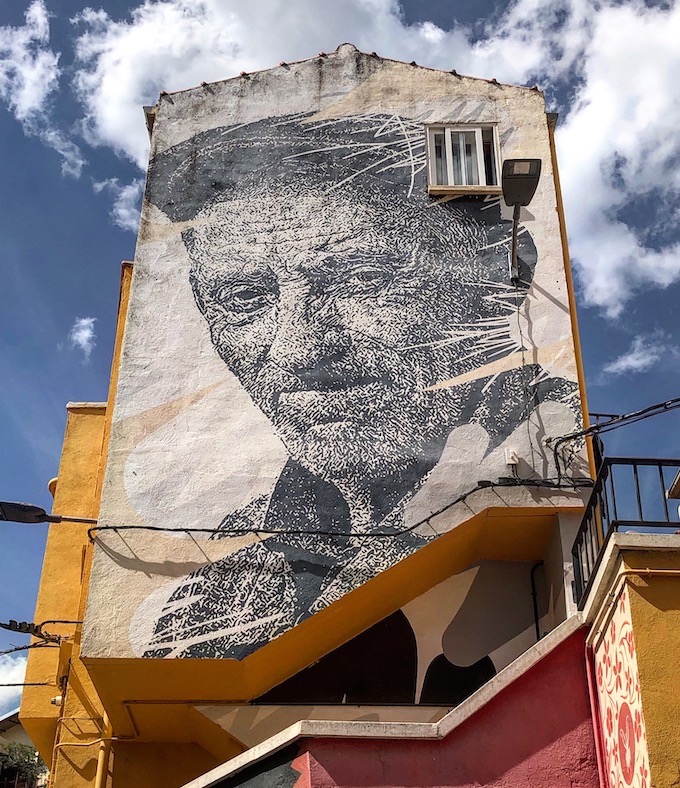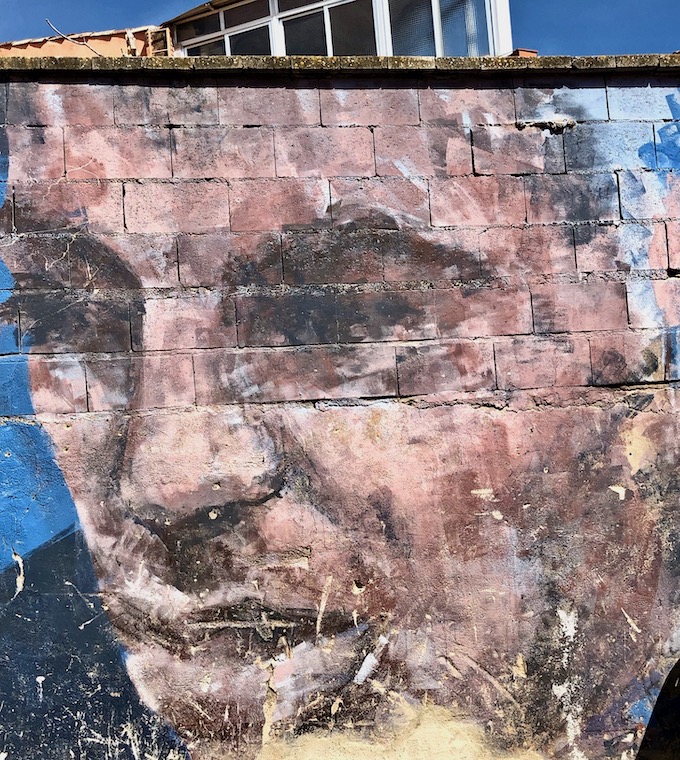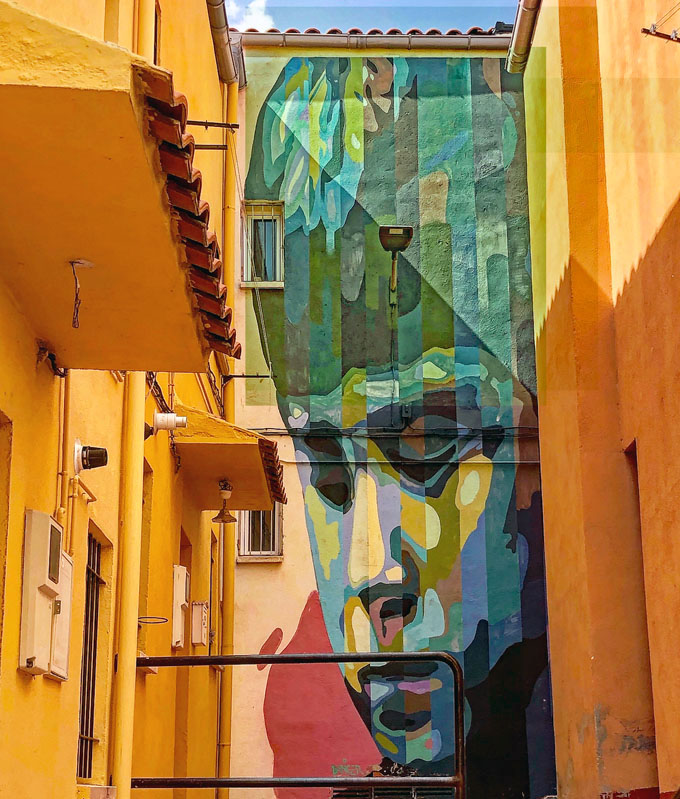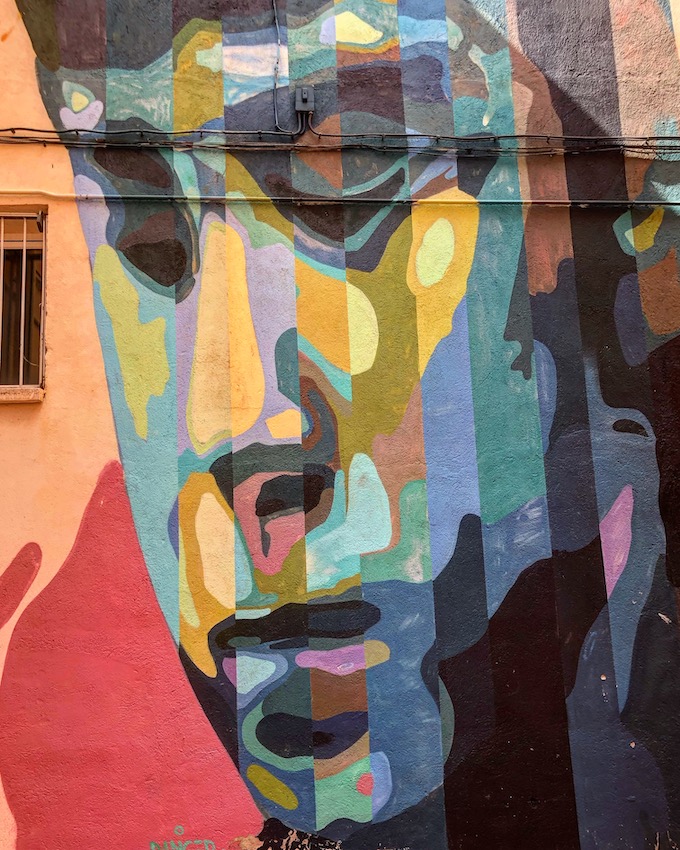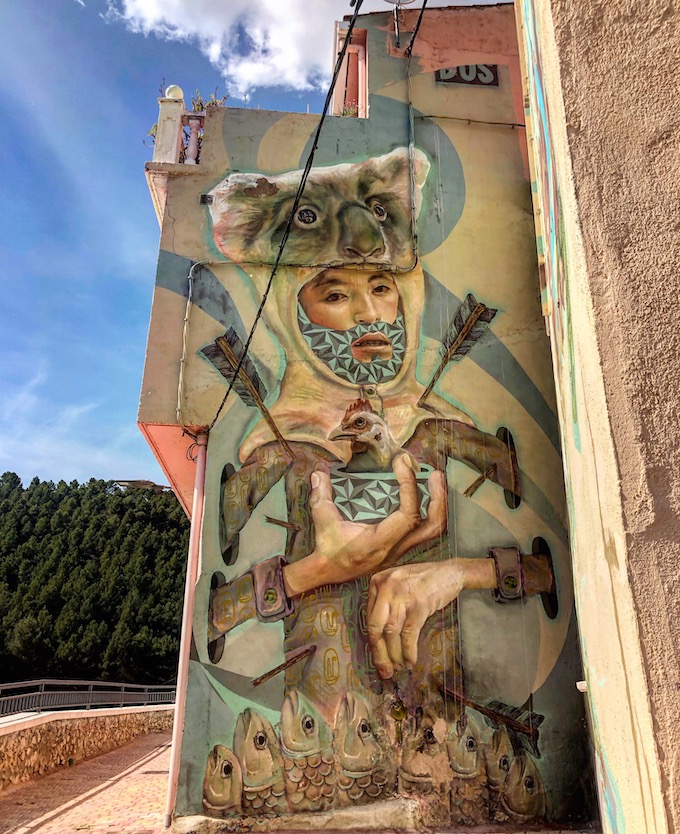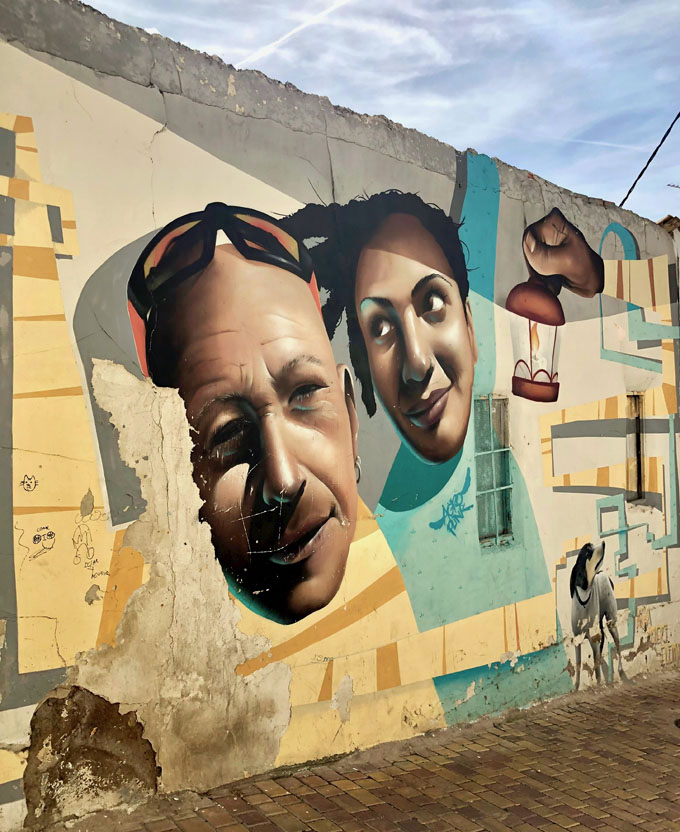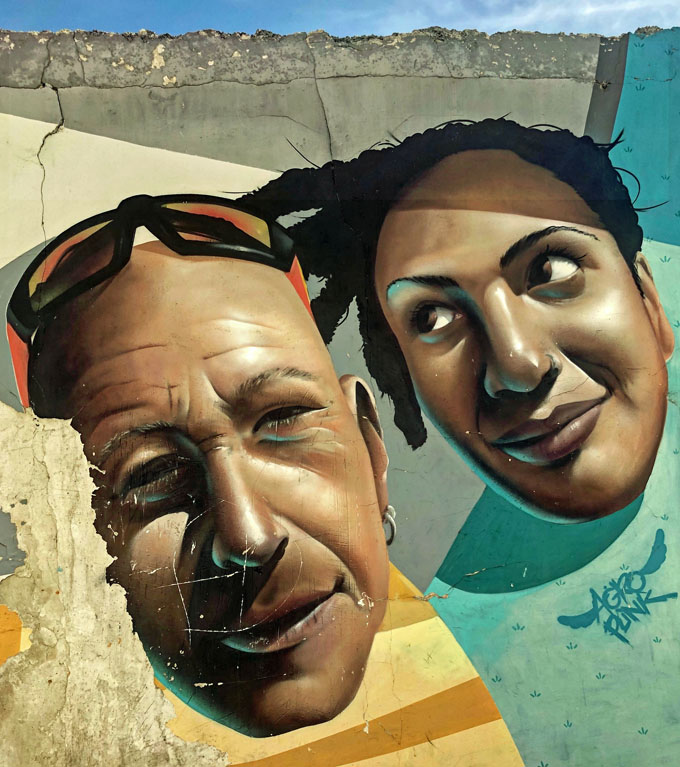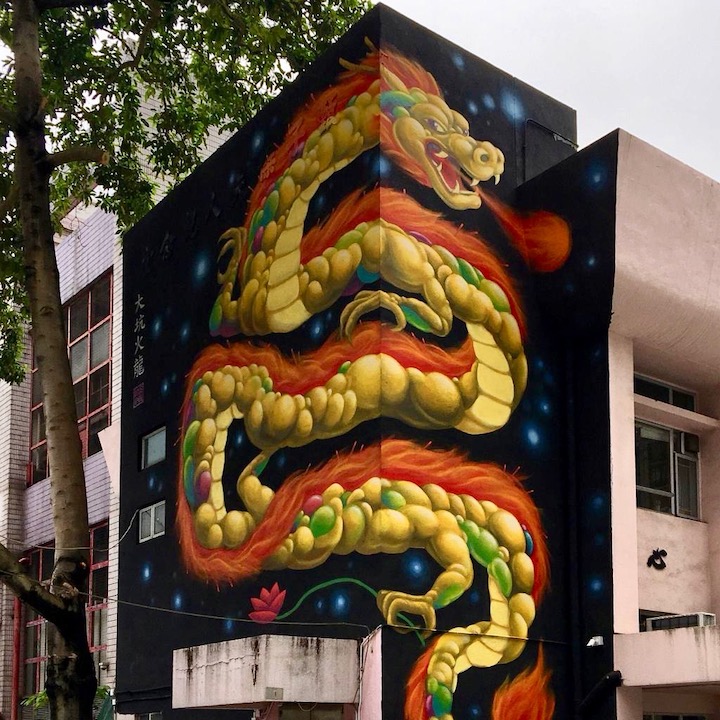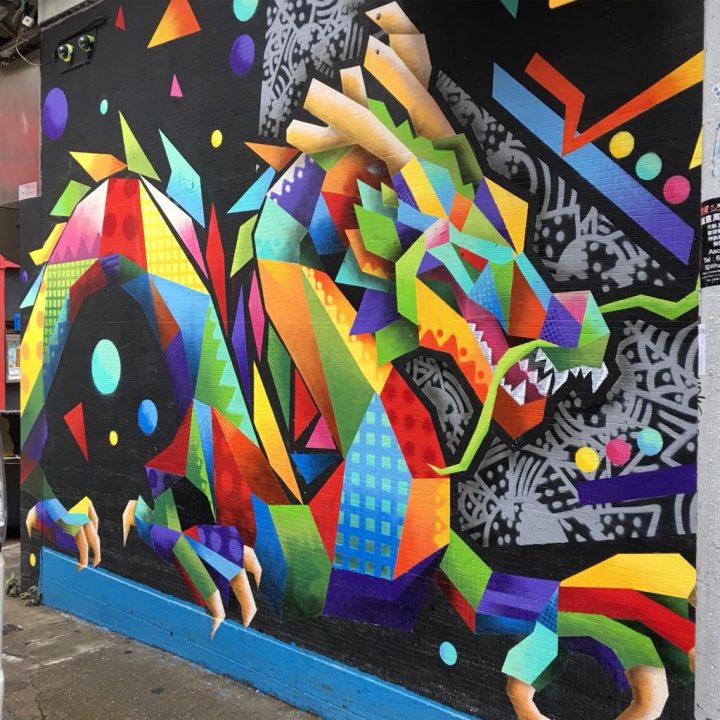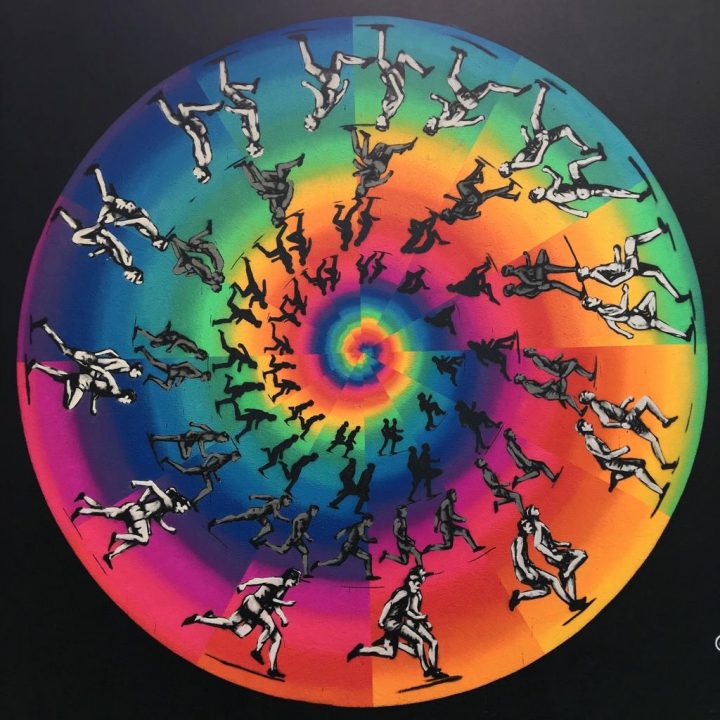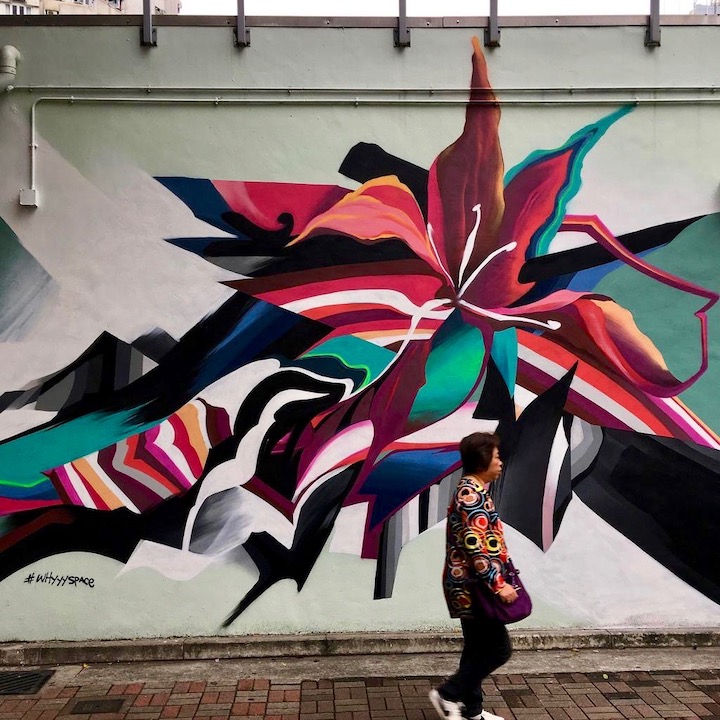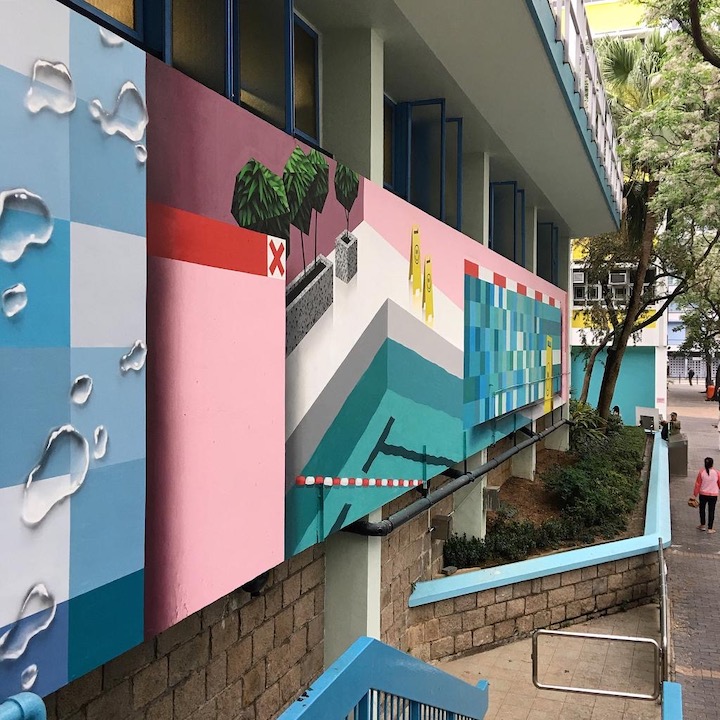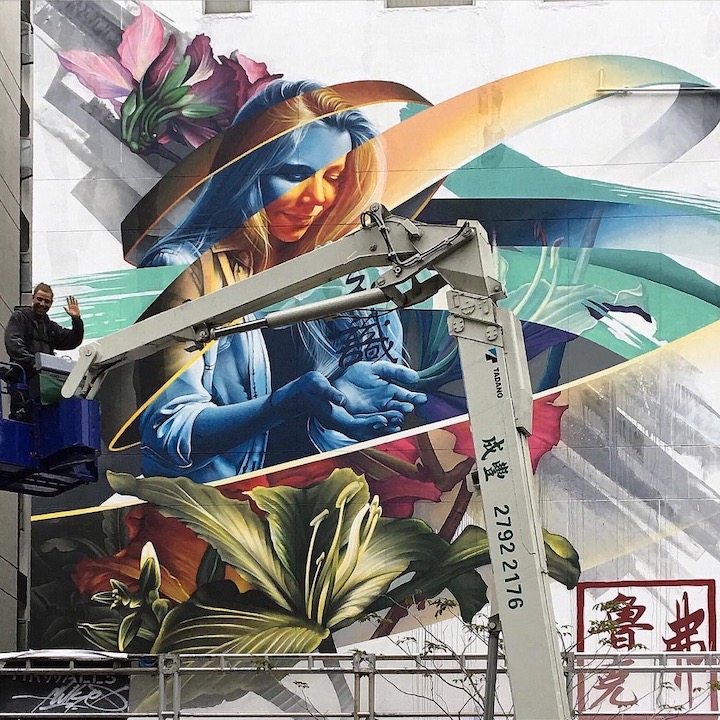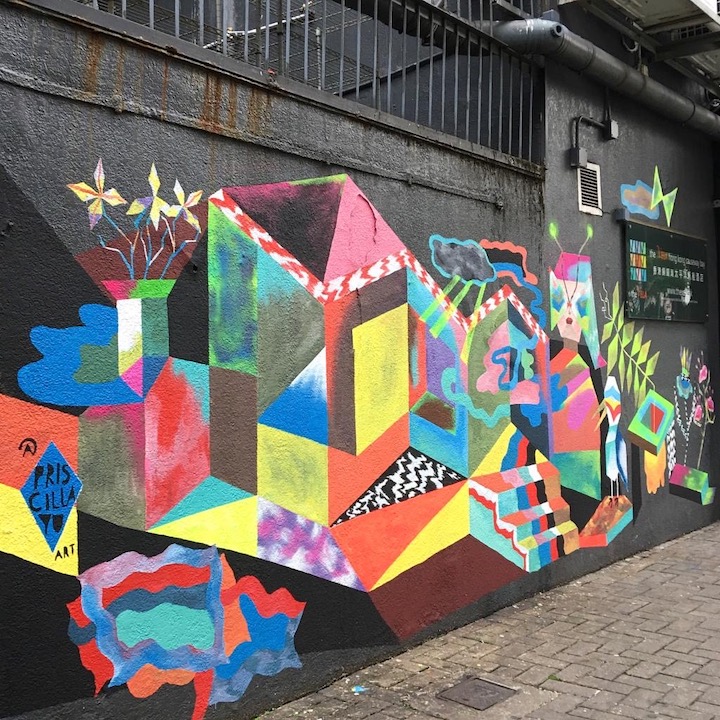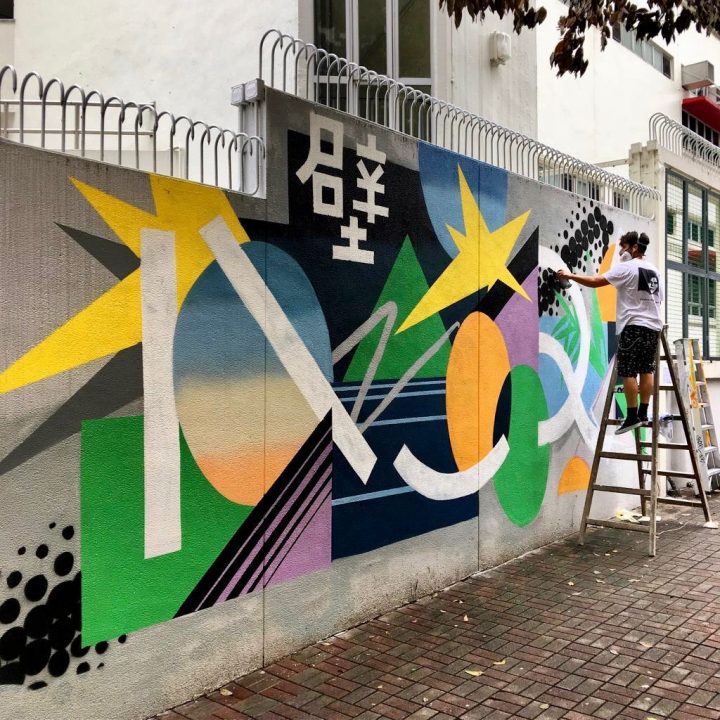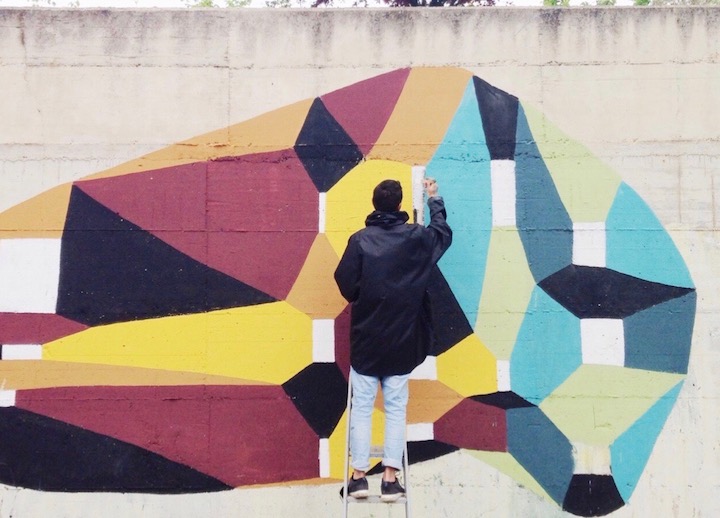
Based in Bari in the South of Italy, Nico Skolp is a masterful designer, graffiti writer and muralist with a particular passion for working in public spaces. As he readies to visit and share his talents with us in New York City, I had the opportunity to pose a few questions to him:
You began painting on the streets as a graffiti writer while still a teenager. How has your style evolved since?
I still paint graffiti, but I am always searching for new inspiration. I’m interested in the possibility of communicating with a larger audience — one outside of the graffiti community. My murals blend shapes and colors into elaborate site-specific abstractions. Although graffiti is composed of letters, it is more difficult to understand and more abstract than some other types of art. It is an interesting paradox!
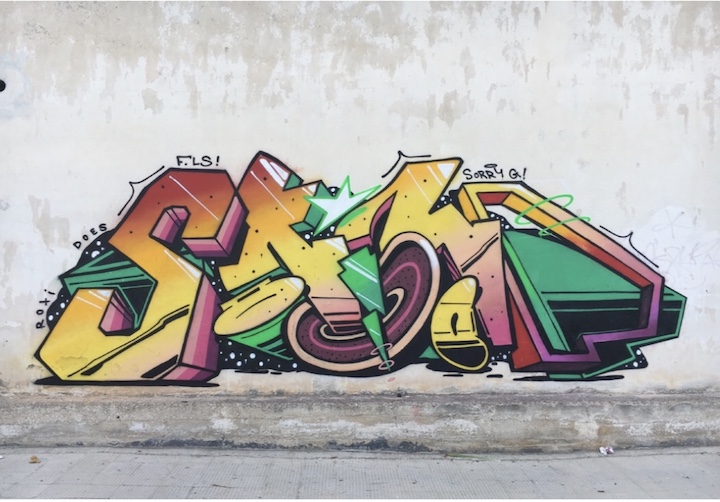
You’ve been increasingly collaborating with other artists. What is that experience like? Is there any artist — in particular — with whom you’d like to collaborate?
I like collaborations. I like sharing visions and methods. It helps sharpen skills. If I could choose anyone with whom to collaborate, I would definitely say MOMO. His works are so interesting! I admire his research and his experimentation.
Have you a formal art education?
I graduated with a degree in Industrial and Communication Design. In fact, I feel more like a designer than an artist. In 2006, I set up a visual arts and design agency, Ff3300.
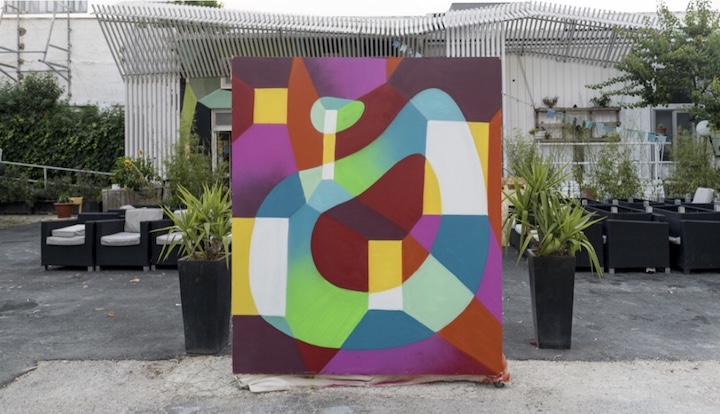
Do any particular graffiti/street art memories stand out?
There is no one memory — in particular — that stands out. But I feel that my crew — Sorry Guys — contributed to the growth of a new generation of writers. Younger writers often enthusiastically tell me how much we have influenced them, as they grew up following us. It is an honor to think that I have inspired other writers, as others — who came before me — inspired me.
When you paint in public spaces, do you work with a sketch-in-hand or just let it flow?
It depends. If the work is a commission, frequently I must first produce a sketch. Otherwise, I don’t, but I do seek inspiration beforehand. I used to work spontaneously, but recently, I’ve been using a method based on the rules that represent my style. It was from my style that the software open-source — based on shapes that are controlled by certain variables — was conceived. With these, you can make infinite compositions. You can download the software here. I designed it with Piero Molino, a close friend — an engineer who works for UBER in San Francisco.
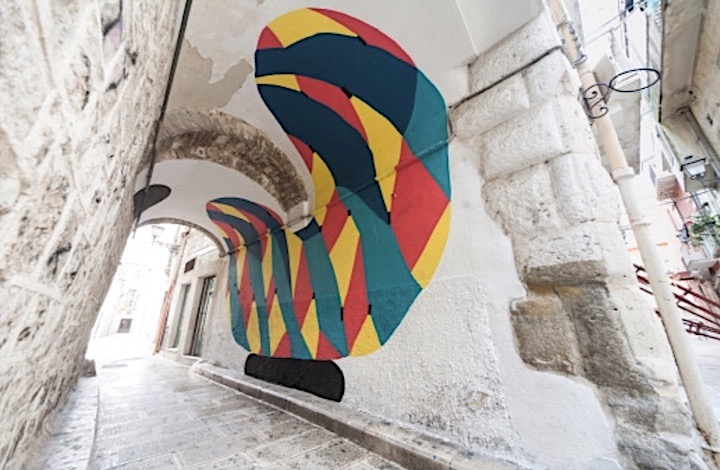
Are you generally satisfied with your finished piece?
In general, yes! I’m satisfied, but I’m always striving to improve. Technically, I think I’m at a good level, The skills I have acquired have boosted my self-confidence. I’m happy with my life choices.
Have you exhibited your work in gallery settings?
I’ve never had a solo exhibition. I’ve just contributed canvases to some graffiti exhibitions such as the one held at the 2010 Meeting of Styles in Tessalonica, Greece. I’ve been thinking recently about showing in a solo exhibition and hopefully start with one in Bari. I love this city and it is where it all started for me. It has recently become a hub for tourism, and I love the idea of making a cultural contribution to it.
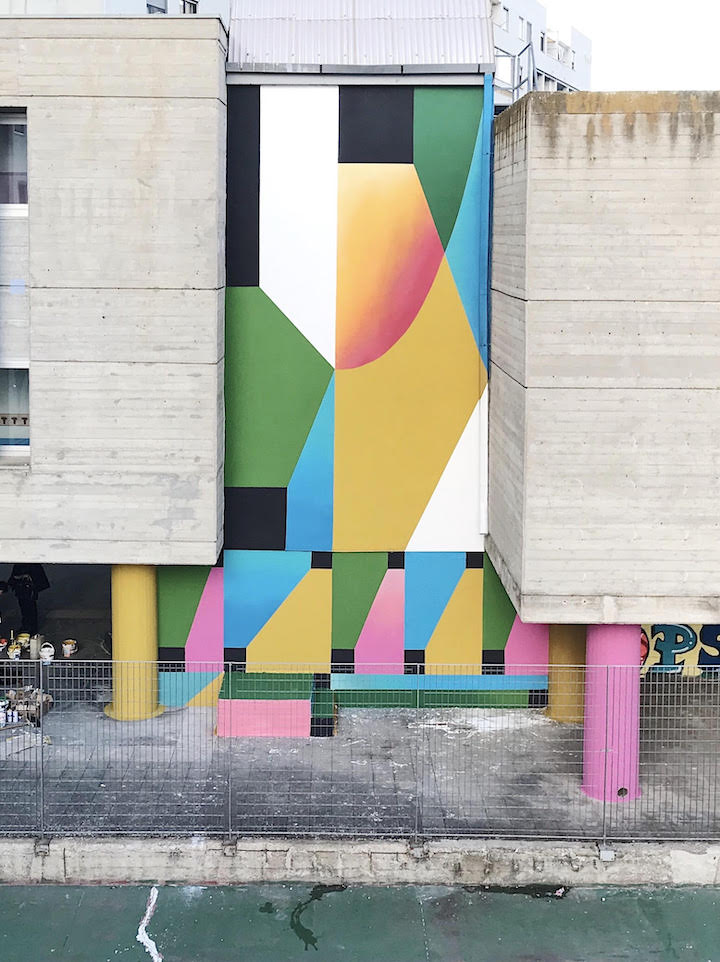
What’s ahead?
I just finished my latest work in Matera, the 2019 Capital of Culture in Europe, and I’m heading now to New York City, where I’d like to explore its urban art culture and make a contribution — why not a wall? — to the city! I will make myself available for any opportunities.
Yes! That would be wonderful!
Note: Nico Skolp can be contacted via his Instagram or his email nicoff3300@gmail.com.
Interview conducted and edited by Lois Stavsky; all images courtesy of the artist
Featured images:
- Matera, Italy
- Bari, Italy
- Bari, Italy
- Corato, Italy
- Matera, Italy
{ 0 comments }
